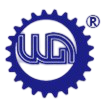Razumevanje mašina za proizvodnju šibica u proizvodnji kože
Istoriski razvoj tehnologije proizvodnje šibica
Proizvodnja kopči ima korene koji sežu duboko u istoriju, još od davnina kada su ljudi imali potrebu za pouzdanim načinima da nešto zakače. Arheološki nalazi pokazuju da su ljudi u Persiji i Grčkoj već stvarali osnovne vrste kopči za odeću i oklope pre mnogo vekova, čime su postavili temelje za savremenu proizvodnju kopči. Zatim je došla industrijska revolucija, koja je potpuno promenila proizvodnju kopči. Kako su se pojavljivale nove tehnologije, naročito one koje su koristile paru, proces se preselio sa ručnog rada na mašinsku proizvodnju. Ova promena je znatno povećala količinu proizvoda i ubrzala proizvodnju. U 20. veku proizvođači kopči počeli su da prihvataju potpuno mehaničke procese, što im je omogućilo masovnu proizvodnju i održavanje stabilnog kvaliteta. Mašine za savijanje žice postale su nezaobilazan alat u radionicama širom sveta. Pregledom zapisa iz tog perioda vidimo da su pronalasci poput mašina za navijanje opruga i specijalnih uređaja za pravljenje lanaca dodatno pomogli industriji da napreduje, otvarajući nove mogućnosti proizvođačima širom sveta.
Ključni sastojci savremenog opreme za izradu škurki
Савремена опрема за производњу закопчала састоји се од више основних делова који чине производњу закопчала за појас ефикасном и поузданом. Машине за савијање жице имају важну улогу у том процесу, јер обликују металне жице у прецизне облике неопходне за већину дизајна закопчала. Ове машине могу да обраде све, од једноставних правих савијања до комплексних кривина, у зависности од захтева које поставља коначни производ. Поред тога, постоје и машине за производњу опруга, које закопчалима дају еластичност приликом закључавања. Без одговарајућих опруга, закопчала би или била превише слаба или би оштетила појас током времена. Произвођачи често прелазе на компоненте од нерђајућег челика и разне легуре, јер ови материјали трају дуже под сталним притиском, а истовремено одржавају структурну интегритет. Технологија управљања помоћу рачунара (CNC) такође је у последњих неколико година драстично променила производњу. Захваљујући системима којима се управља помоћу рачунара, произвођачи могу да праве веома детаљне украсе и да одржавају стално висок квалитет свих јединица које излазе са производне линије. Како се безбедносни стандарди појачавају, а купци очекују естетичније производе, постaje апсолутно неопходно да машине испуне ове захтеве, како би сериозни произвођачи могли да остану конкурентни у овој тржишној ниши.
Osnovni procesi omogućeni mašinerijom Buckle
Tehnike savijanja žice za metalne komponente zaklopova
Уметност савијања жице је у основи већине металних делова који се данас користе за прављење закопчава. Када се обликује метал за ове сврхе, прецизност је веома важна, јер чак и мала одступања могу утицати на то колико добро финални производ функционише. Современа опрема за савијање жице омогућава масовну производњу много брже и смањује отпад материјала, што на дужи термин уштеди новац и ресурсе. И брендови моде и произвођачи аутомобила су у последње време почели да користе боље методе савијања жице, стварајући закопчаве који изгледају упечатљиво, а ипак издржавају стварне услове у пракси. У наредном периоду, очигледно је да ће наставак унапређења у овој области даље прошировати границе онога што је могуће у дизајну закопчава у различитим индустријама.
Integracija mehanizma zavojeva u funkcionalne zatvaraljke
Машине које праве опруге имају велики значај када су у питању механизми опруга у закачкама, нешто што је практично неопходно за сваки систем закључавања који заправо функционише. Већина опруга за закачке се прави од материјала као што је нерђајући челик или разне легуре, зато што морају да се савијају а да при том задржавају облик током дужег временског периода. Ови мали делови чине разлику у начину на који закачке функционишу свакодневно, омогућавајући им да се отварају и затварају глатко, без закорављивања. Сада свуда уочавамо ове закачке, на свему почевши од ранчева, па све до чарапа и чак неких појасева. Када произвођачи правилно интегришу опруге, закачке трају дуже и укупно гледано боље функционишу, што показује колико је битно да се детаљи правилно обраде током производње. Квалитетно инжењерство није само нешто што је пожељно, већ је практично обавезно ако компаније желе да им производи издрже редовну употребу.
Precizno oblikovanje dizajna pasovskih zaklopova
Važno je pravilno odrediti detalje kada se proizvode kopče za pojaseve koje će zadovoljiti različite kupce. Savremena tehnologija, poput CNC mašina, omogućava proizvođačima da prave veoma detaljne i kompleksne dizajne, pri čemu sve kopče izgledaju skoro identično. Kada kompanije prate standardne postupke i sprovode odgovarajuće kontrole kvaliteta, njihovi proizvodi zapravo traju duže nego što bi sugerisalo samo ispunjenje osnovnih specifikacija. Zamislite koliko puta neko može nositi kopču pre nego što se istroši ili ošteti. Danas ljudi žele proizvode koji izgledaju lepo, ali koji mogu podneti i izvesno oštećenje. Zbog toga precizna proizvodnja ostaje izuzetno važna za održavanje konkurentnosti na tržištima gde se moda brzo menja, ali visoke zahteve u pogledu kvaliteta ostaju nepromenjeni bez obzira na cenu.
Operativne Prednosti u Proizvodnji Kožnih Roba
Poboljšanje Brzine Proizvodnje za Komercijalne Zahteve
Посао са кожним производима се данас креће брзином мола, тако да су машине за производњу копчића готово незаобилазне ако фабрике хоће да прате наредбе купаца. Већина произвођача сада се ослања на ствари као што су аутоматизовани системи и боље организовани радни простори да би операције пролазиле глатко. Узмите за пример модерне машине за копчиће – оне су заиста промениле игру за многа предузећа. Неке радионице су чак забележиле скок производње од око 30% након преласка на ове нове системе. Шта чини ове машине толико добри? Оне смањују потребу за ручним радом и омогућавају производима да се крећу фабриком много брже када постоји велики захтев. За претрпане радионице које покушавају брзо да испуне наредбе без превеликог напора, оваква надоградња може да буде одлучујућа.
Konstancija u visokoproductnoj proizvodnji šibica
Tehnologija koja stoji iza savremenih mašina za proizvodnju kopči igra ključnu ulogu u održavanju stabilnog kvaliteta pri masovnoj proizvodnji. Ove mašine dolaze sa različitim funkcijama koje pomažu u očuvanju jedinstvenih dizajna i pravilnog funkcionisanja svih proizvoda, što je neophodno za ispunjenje industrijskih standarda. Kada je u pitanju merenje doslednosti, većina fabrika kao glavni pokazatelj koristi stopu odbijanja. Prihvatljiv cilj bi bio ispod 2%, iako se to postiže samo kroz pažljivo vođenje procesa proizvodnje. Industrijski standardi zahtevaju vrlo temeljno testiranje tokom celokupnog proizvodnog procesa. Svaka pojedinačna kopča mora odgovarati originalnom dizajnu pre nego što napusti fabriku, što na kraju znači da kupci dobijaju pouzdane i verodostojne proizvode.
Možnosti prilagođavanja za luksuzne marke
Jedna od glavnih prednosti savremenih mašina za proizvodnju kopči je mogućnost da brendovi prilagode dizajn posebno za luksuzne kupce. Ove mašine su opremljene karakteristikama kao što su precizne opcije graviranja i podrška za različite materijale, što znači da kompanije mogu praviti jedinstvene kopče koje se ističu. Kada brend nudi personalizovane kopče, to istovremeno postiže dve stvari: povećava njegovu percepciju vrednosti i zadovoljava kupce, jer ljudi vole da poseduju predmete koji odgovaraju njihovim stilskim preferencama. Zamislite svet visoke mode gde svaki detalj ima značaja. Dobre dizajnirana kopča može da napravi razliku između običnog proizvoda na polici i nečeg zaista nezaboravnog koje privlači poglede i natera ljude da se vraćaju.
Tehnički izazovi i razmatranja o održavanju
Saglasnost materijala sa različitim vrstama kože
Biranje odgovarajuće materijale za kopče koje će se koristiti uz različite vrste kože ostaje glavni problem proizvođačima širom industrije. Pravilan izbor materijala čini ogromnu razliku kada je u pitanju koliko dugo će ove kopče trajati i kako će izgledati na gotovim proizvodima. Nepravilno izabran metal može na duži rok oštetiti kožu kroz kontakt, izazvati promenu boje ili čak strukturnu slabost materijala. Pamtivi proizvođači posvećuju značajno vreme proučavanju hemijske reakcije različitih metala sa tretmanima kože. Nehrđajući čelik ističe se kao jedan od najboljih izbora jer otpornost na koroziju štedi probleme u kasnijim fazama. Međutim, mesing donosi onaj klasičan staromodni šarm koji mnogi potrošači žele za proizvode od istorijske kože, iako zahteva pažljivu obradu tokom proizvodnje kako bi se izbegle neželjene reakcije s taninima u samoj koži.
Upravljanje nošenjem u kontinualnim radnim okruženjima
Upravljanje habanjem mašinerije za zaključavanje je veoma važno kada je u pitanju održavanje stabilne proizvodnje u fabricima koje rade non-stop. Vlasnici fabrika trebaju dobre planove kako bi smanjili trošenje mašina, da bi izbegli neočekivane prekide rada. Redovne inspekcije, zamena delova pre nego što potpuno otkazu, kao i praćenje smernica iz izvora kao što je ISO, predstavljaju razumne prakse za sve one koji se suočavaju sa ovim problemom. Većina pogona ustanovi da se pridržavanje redovnih programa održavanja isplati na duži rok, dok održava glatko funkcionisanje opreme većinu vremena. Neke kompanije čak prate koliko često određeni komponenti trebaju zamenu na osnovu stvarne upotrebe, umesto da slepo prate preporuke proizvođača.
Strategije optimizacije energetske efikasnosti
Када су у питању машине за производњу закопчава, енергетска ефикасност има велики значај, јер директно утиче на трошкове операција. Компаније које желе да смање трошкове струје често прибегавају разним методама уштеде енергије. Неке инсталирају паметне контроле које управљају укључивањем струје у различите делове машине, док друге улажу у новију опрему која је специјално направљена да троши мање енергије. Узмимо као пример променљиве фреквенције. Ови уређаји мењају количину електричне енергије која се користи у складу са стварним потребама машине у датом тренутку, уместо да раде на максималној јачини све време. Резултат? Мање пропадања енергије значи и зеленије производне праксе и нижи месечни трошкови за власнике фабрика који спроводе овакве побољшања.
Buduće inovacije u proizvodnji pripada
Sistemi za kontrolu kvaliteta pogonom AI-om
Veštačka inteligencija postala je izuzetno važna u proizvodnji veznih elemenata poslednjih godina, naročito kada je u pitanju kontrola kvaliteta kopči tokom procesa proizvodnje. Tehnologija u osnovi povećava tačnost i smanjuje greške jer može automatski da inspektuje proizvode, analizira podatke u realnom vremenu i čak predviđa potencijalne probleme pre nego što nastanu. Za proizvođače, to znači bolji kontrolu kvaliteta bez usporenja brzine proizvodnje. Gledajući trenutne tokove u različitim sektorima, brojke pričaju same za sebe. AI sistemi obično daju daleko konzistentnije rezultate u poređenju sa ljudima koji obavljaju inspekciju ručno. Zbog toga sve više kompanija prelazi na ove pametne rešenja ako žele da ostanu konkurentne i osiguraju da njihove kopče ispunjavaju stroge standarde kvaliteta koje kupci očekuju danas.
Trendovi integracije održivih materijala
Сектор за производњу закачака у последње време има прави потисак ка коришћењу еко материјала како би се испунила строжа еколошка регулисања. Пошто потрошачи све више траже производе који не штете планети, произвођачи су почели да истражују алтернативе традиционалним материјалима за производњу закачака за појасеве и друге спојнице. Неки људи у индустрији овај помак називају зеленом револуцијом, мада други то виде једноставно као добар пословни осећај, у складу са захтевима данашњег тржишта. Компаније, велике и мале, тренутно експериментишу са разним опцијама – почевши од биополимера који се природно разлажу током времена, па све до метала који се поново користе и који су прикупљени из старих индустријских отпадака. Иако прелазак на ове материјале помаже у смањивању еколошког утицаја, многи произвођачи и даље имају проблема да избалансирају ефективност по питању трошкова и циљеве одрживости, покушавајући да задовоље захтеве глобалних купаца.
Inteligentna tehnologija zaklopova za povezane priloge
Pametna tehnologija kopči postaje sve veća u svetu veza, potiskujući napredak u oblasti povezanih oprema. Zamislite, ove kopče imaju ugrađene minijaturne senzore zajedno sa Bluetooth konekcijom, pa zapravo komuniciraju sa uređajima. Ljudi dobijaju razne korisne funkcije, poput brojača koraka ili automatskog zatezanja u skladu sa željenim nivoom zatezanja trake. Ova tehnologija se sve više pojavljuje ne samo u uređajima za praćenje fizičke aktivnosti, već i u visokoj modi, gde dizajneri žele da spoje stil i funkcionalnost. Tržište se širi jer potrošači žele da njihovi uređaji rade više stvari istovremeno. Za proizvođače, to znači potpuno nove pristupe dizajniranju proizvoda, uz osiguranje boljeg iskustva korisnika u interakciji sa svakodnevnim nosivim uređajima. Zanimljivo je kako kompanije pronalaze načine da tehnologiju učine nevidljivom, a ipak korisnom, čak i u nečemu tako jednostavnom kao što je vezivanje pojasa oko struka.



